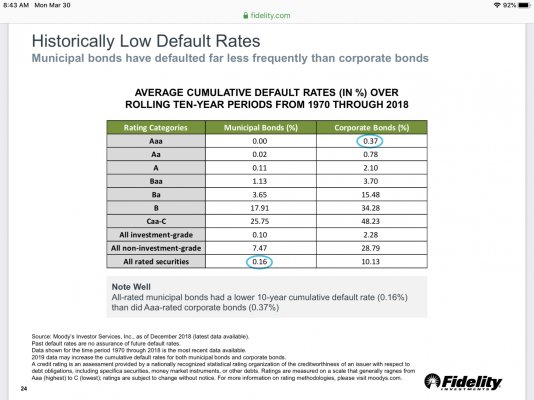aja8888
Moderator Emeritus
I buy individual muni bonds through Schwab. Previously I had a personal account rep solely for my bond portfolio. Which meant that each time I wanted to buy a bond I could process it through him. I would offer a price below the ask and he would try and fill the order. Sometimes it went through and sometimes it didn't. Unfortunately, this gentleman retired and that ability has went away. I have also noticed that Schwab seems to be shifting its customer service away from individualized account reps even for larger accounts. It doesn't really bother me (except for loss of the above ability) because I never really need an account rep. If I have an issue I go to my local Schwab office and they resolve the issue personally.
Funny thing.....Schwab just assigned me a personal rep after 38 years of not having, or wanting, one. He is right out of college and has no real experience and wants to sell me all kinds of stuff. He also wants to set me up with a financial life plan. Once I told him I was going on 79 years old and I don't really need a 30 year plan, he got quiet. He's there if I need him. LOL


